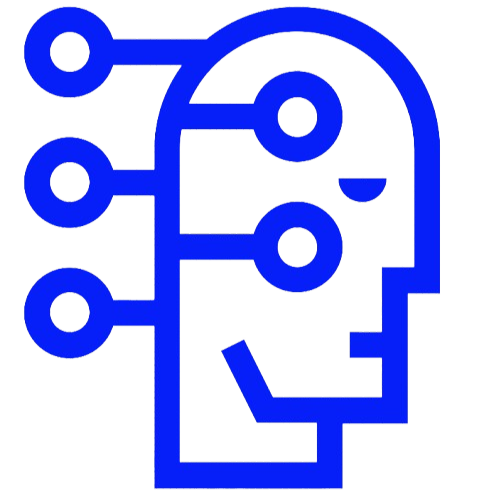Generative AI has sparked a revolution, promising to automate complex tasks and unlock unprecedented productivity. But for any business building mission-critical applications, a critical question remains: Can I trust it?
The "black box" nature of today's AI, powered by probabilistic models like Retrieval-Augmented Generation (RAG), leads to unpredictable outputs, hallucinations, and a complete lack of auditability. When stakes are high, "mostly accurate" isn't good enough.
This is why a new architectural paradigm is emerging: the Deterministic AI Agent (DAA). This article defines what a DAA is, how its core principles solve the trust problem, and why it represents the future of enterprise-grade AI.
The Limits of Probabilistic RAG
Retrieval-Augmented Generation (RAG) was the first major architectural step towards grounding Large Language Models (LLMs) in factual data. By providing the model with relevant documents as context, RAG significantly reduces the frequency of hallucinations.
However, for mission-critical applications, it doesn't solve the fundamental problems of control and reliability. Standard RAG pipelines are still inherently probabilistic and suffer from three critical limitations:
- Unpredictable Interpretation: While RAG provides the right information, the LLM's interpretation of that information remains a black box. It can still misunderstand nuance, ignore critical details, or synthesize an answer that, while plausible-sounding, is incorrect.
- Lack of Controllability: RAG offers no mechanism to enforce hard business rules. An organization cannot instruct a standard RAG system to "always prioritize information from a Q3 financial report over a press release," for example. The logic is outsourced to the probabilistic whims of the LLM.
- No Audit Trail: When a standard RAG system produces an incorrect answer, tracing the root cause is nearly impossible. The final output is a complex fusion of the retrieved context and the model's opaque reasoning process, which is unacceptable for any high-stakes application.
The market has reached the ceiling of what simple RAG can provide. To bridge the trust gap, a new approach is required—one based on the principles of deterministic control.
The DAA Framework: The Three Pillars of Trustworthy AI
A Deterministic AI Agent is built upon a robust Context Engineering platform. This platform rests on three essential pillars that work in concert to ensure control, reliability, and explainability.
1. Structured Knowledge: Wiring the Core Concepts
The foundation of any reliable intelligence is structured information. By defining a rich schema of Metadata, every piece of ingested data is tagged with its true business context. This multi-modal layer serves as the bedrock for all deterministic operations, allowing a DAA to answer quantitative questions with mathematical precision.
2. Rule-Based Reasoning: Hardwiring the Logic
This is the logic layer of the deterministic brain. Semantic Rules are explicit, human-defined instructions that govern the AI's behavior. These inviolable directives allow you to encode your specific business logic directly into the AI's reasoning process, forcing it to prioritize, ignore, or act on data according to your rules.
3. Auditable Planning: The Conscious Mind
This is the explainability layer. Instead of a black-box answer, a DAA generates a TaskGraph—a structured, step-by-step plan that serves as a verifiable audit trail. This makes the agent's reasoning fully transparent and answers the critical question of "Why?".
Use Case in Action: The Financial Analysis DAA
To understand the practical impact of the DAA framework, consider a common enterprise query: "What was our net revenue in Q3, and what was the main contributing factor?"
A standard RAG system might retrieve two documents: the official Q3 financial report and a speculative internal email. The probabilistic LLM, lacking explicit rules, could merge these sources and produce a plausible but incorrect answer.
A Deterministic AI Agent executes a precise, auditable sequence:
-
Rule-Based Prioritization: A Semantic Rule first identifies the query as a
financial_performance_request, enforcing a directive that any document withdoc_type: "SEC Filing"must be prioritized. -
Structured Knowledge Extraction: The Structured Knowledge layer allows the agent to identify the
net_revenuemetadata field and extract the exact figure—$1,253,420—from the official report, not an approximation. -
Auditable Planning: Finally, the agent generates a transparent TaskGraph, showing its reasoning path:
[Node A: Extract Net Revenue] → is explained by → [Node B: Cite CEO's Commentary]. The speculative email is correctly and verifiably ignored.
This is the power of determinism. The query is transformed from a probabilistic gamble into a reliable and repeatable industrial process.
Why DAAs are the Future of Enterprise AI
The shift from probabilistic RAG to Deterministic AI Agents is more than a technical upgrade; it's a move from augmentation to control.
For the first time, businesses can deploy AI for mission-critical tasks with the confidence that it will operate according to their exact rules and logic. This unlocks a new generation of applications in finance, healthcare, and any field where trust and auditability are non-negotiable.
DhakaBrain is the first platform engineered from the ground up to build, manage, and deploy DAAs. Ready to move beyond the black box and build AI you can actually control?
